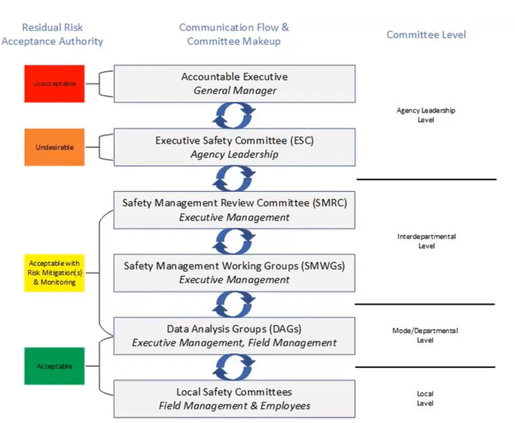Event Recap: Steve Poftak, MBTA General Manager
December 16, 2021
A Better City welcomed MBTA General Manager Steve Poftak on Tuesday, November 16th to discuss the MBTA's progress toward implementing the MBTA Safety Review Panel's December 2019 recommendations, and other timely updates, including ridership trends and the objectives of the newly appointed MBTA Board of Directors.
BY CAITLIN ALLEN-CONNELLY, PROJECT DIRECTOR | WATCH
REVENUE & RIDERSHIP TRENDS AND SAFETY DURING COVID-19
The General Manager provided a brief update on current ridership trends. From a revenue perspective, he noted that fare revenue is substantially ahead of projections used for the FY22 budgetary process. From a passenger perspective, ridership has been gradually coming back across all modes accelerating into September with significant recent upticks on the commuter rail, which saw the strongest attrition during the pandemic. The MBTA continues to lean in on safety on the T with a strong Ride Safer campaign highlighting actions the MBTA is taking to mitigate COVID-19, including air exchange, masks, cleaning and disinfecting.
SAFETY REVIEW PANEL REPORT
The Safety Review Panel Report came out in December 2019 outlining 34 recommendations with 61 potential corrective actions, which the MBTA organized into six distinct categories and identified 165 different initiatives intended to address the system’s safety shortfalls and are part of the MBTA’s safety management system (SMS).
- Establish safety objectives, safety performance targets, performance indicators that are aligned with industry best practices which are closely monitored, and provided with sufficient human capital and funding to be carried out.
- Identify all areas where deferred maintenance is occurring
- Ensure sufficient resources are devoted to expediting implementation of data collection systems, particularly in the maintenance, training, and medical departments.
- Consider adopting Federal Railroad Administration standards (that now govern commuter rail operations) for rapid transit as well, in order to provide standards and guidance for MBTA transit safety.
- Build up the MBTA’s leadership team, including by adding more seasoned transit professionals with operations and safety expertise and experience.
- Petition the Legislature to reduce mandated 36-times-per-year frequency of FMCB meetings, or make meeting preparations less burdensome on staff because the large demands on senior staff to prepare for board meetings divert attention from operations and safety.
The 135 initiatives identified include a range of actions that include fundamental changes to the way the MBTA does business as well as very granular actions related to vehicle and asset maintenance.
TRACKING PROGRESS IS ESSENTIAL TO SUCCESS
The GM reported that 34 completed, 46 in progress, 29 on hold, and 56 are being monitored. He also noted that Safety Committees were created that are responsible for oversight and implementation, which meet quarterly with reports from each department on their respective progress. Further, he stated that the MBTA has set targets, collects data, and tracks several safety indicators monthly for bus, heavy rail, light rail, and paratransit. This allows relatively immediate identification of areas where the T is failing to meet targets so action can be taken to remedy. He also said that the T is struggling with customer injuries during the pandemic given the high level of vulnerable riders and transit dependent riders using the system.

To support successful implementation of the safety recommendations, the MBTA is adding staff with 50 positions budgeted. In November 2017, there were 21 safety employees; today, there are 41 employees and 9 vacant positions. The budget for safety at the MBTA has also increased. Spending is current down mostly due to difficulties in recruiting during the pandemic. The GM stressed that the job of safety is everyone’s job at the T and not just the safety team – it’s a collective responsibility and effort.
CAPITAL INVESTMENTS: CRITICAL DRIVER FOR SAFETY
Another priority for safety is investments in reliability, modernization, and expansion the General Manager stressed. Less than four years ago the MTBA was spending less than $400 million a year on both reliability and modernization. During his tenure, the level of investment is significantly higher. He noted that the capital program exceeded its FY21 goal by 15% ($176 million in investment). The T is committed to spending $2 billion year over year to make the T safer and more reliable.
The General Manager spoke specifically to investments in the Green Line Protection System to prevent collisions like the recent accident and bring the Green Line up to higher level of safety. He highlighted the Positive Train Control (PTC) work that was done to the commuter rail mandated by the Federal Transit Administration (FTA) and future Automatic Train Control (ATC) work which represents $500 million and $200-$300 million in investments.
CREATING A POSITIVE SAFETY CULTURE IS KEY TO SUSTAINABLE CHANGE AND A SAFE MBTA
The MBTA is focused on creating a positive safety culture across the organization, which allows employees to feel empowered to report safety issues without fear of being reprimanded. The General Manager stressed that this is an ongoing process the T is committed to realizing.
Q&A
During the question and answer section of the meeting, members continued to explore topics related to ongoing challenges at the MBTA, including system safety, the role of the business community in encouraging transit use, plans for federal infrastructure funds, different options for fare products and pricing, and various environmental and energy impacts expected in this region in the near future.
For more information or if you have additional questions about this event and the discussion, please email tryan@abettercity.org




